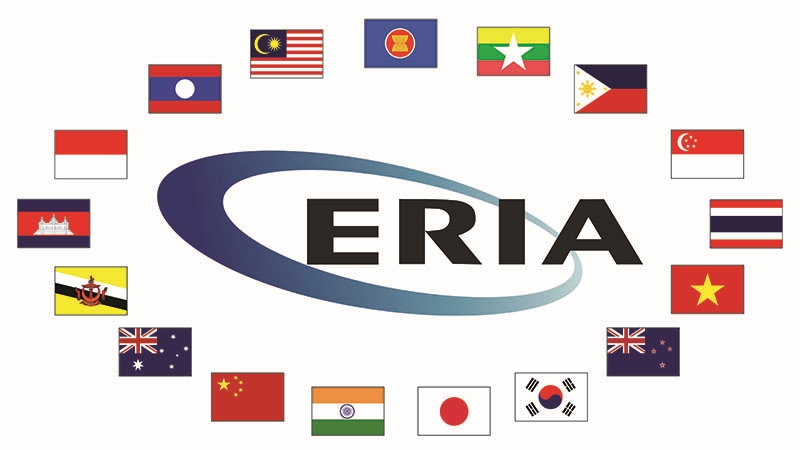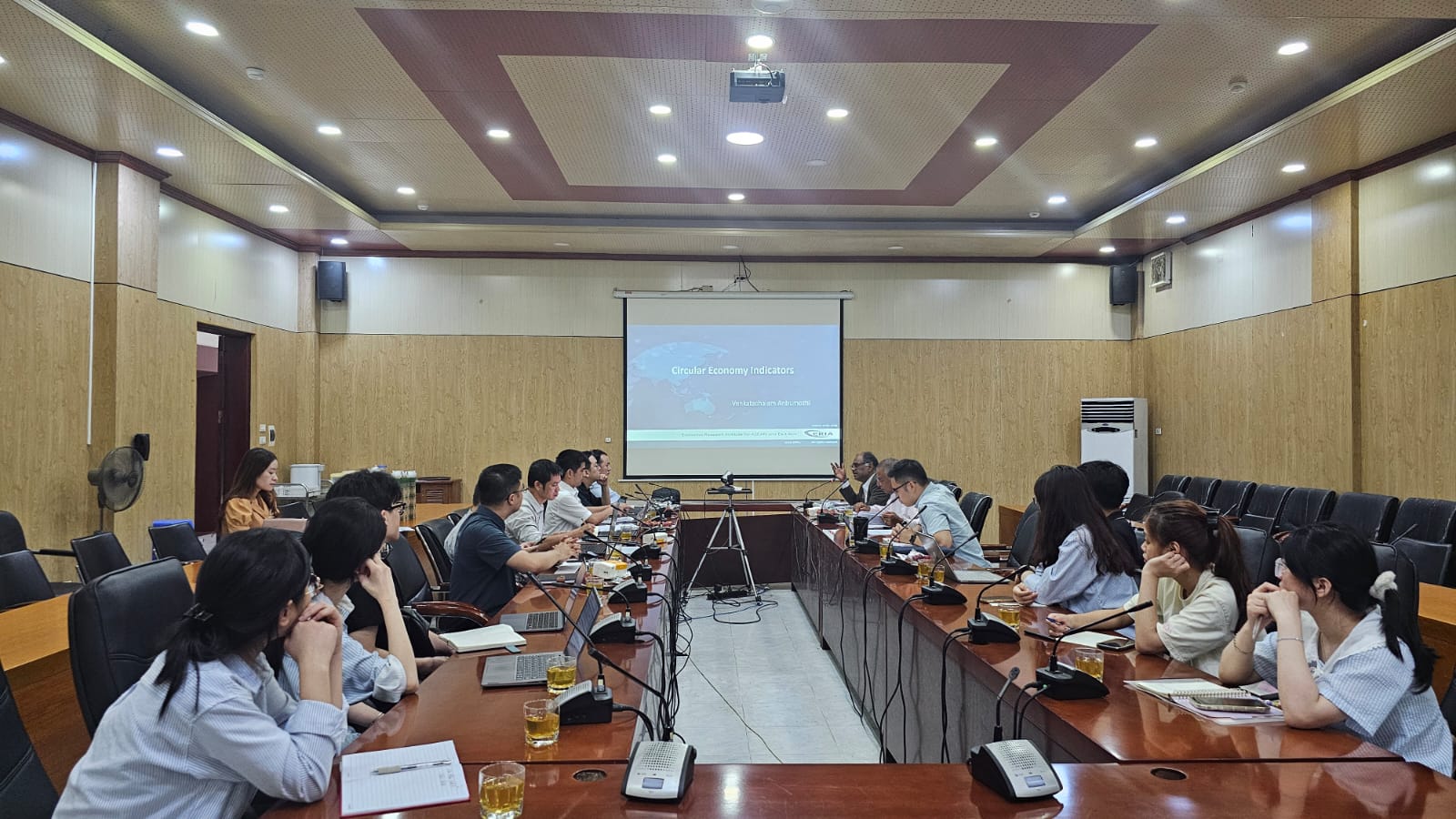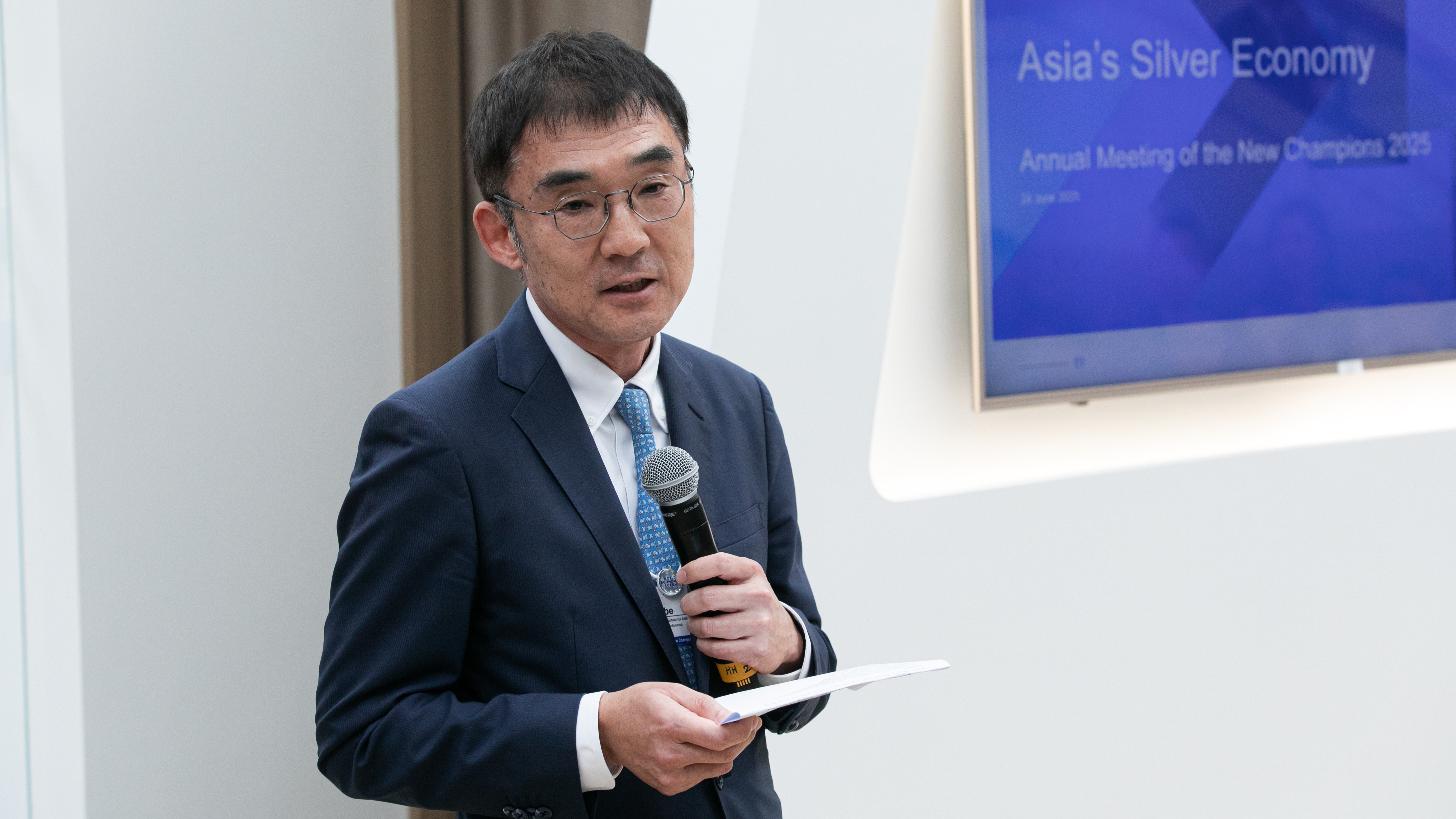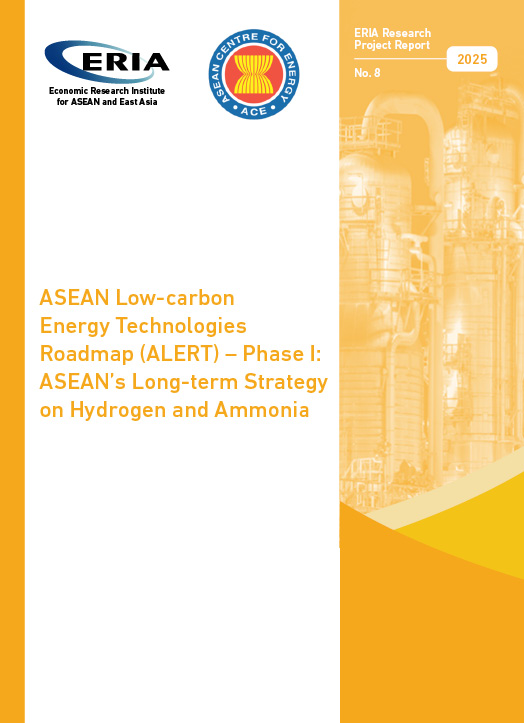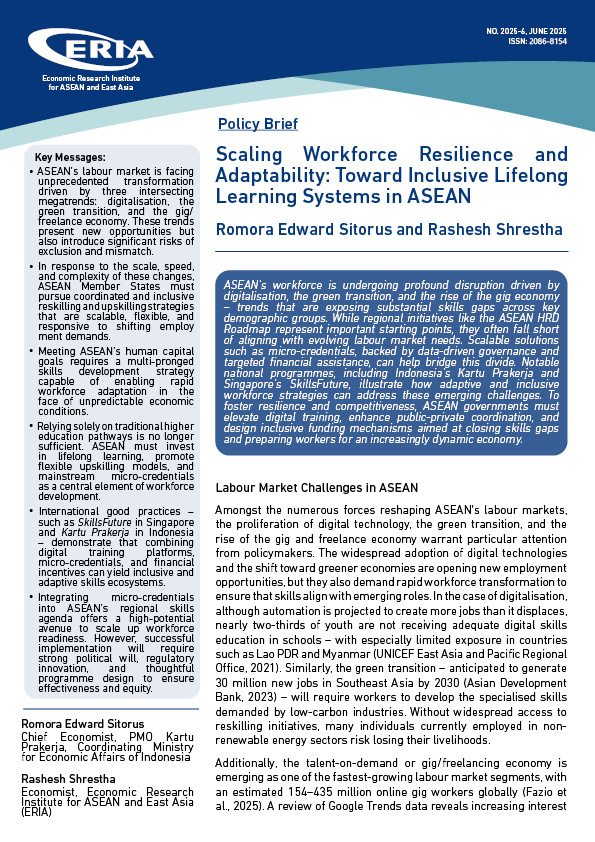ERIA Study: Challenges Ahead but High Hopes Remain for ASEAN and AEC Beyond 2015
Date:
22 November 2013Category:
News, Press ReleasesShare Article:
Print Article:
Highlights of a major ERIA study looking at a number of areas relating to moving ASEAN and AEC forward beyond 2015 was presented during the first of a series of workshops conducted by the Economic Research Institute for ASEAN and East Asia (ERIA).
In collaboration with the Centre for Strategic and International Studies (CSIS), on November 16, 2013 at the new CSIS building in Jakarta, ERIA Senior Researcher Dr. Ponciano Intal, Jr. presented the highlights of a major ERIA study looking at a number of areas relating to moving ASEAN and AEC forward beyond 2015.
With the title "ASEAN Rising: Moving ASEAN and AEC Forward Beyond 2015", Dr. Intal acknowledged that on the whole, the study raises optimism and hope for the region to realize its goal of having a truly integrated ASEAN that is competitive and dynamic, inclusive and resilient as well as outward-looking and globally engaged.
And there is indeed reason for such hope and optimism, according to Dr. Intal, as he cited the significant economic progress and transformation that have taken place in many of the ASEAN member states (AMSs)in the last two or three decades. Poverty rate in the region, for instance, dramatically went down from 45 percent in 1990 to 14 percent in 2010 while the poverty gap was significantly reduced from 14 percent in 1990 to 3 percent in 2010. At the same time, the percentage of middle class in ASEAN continued to increase as the figure went up from 15 percent in 1990 to 37 percent in 2010.
Substantial progress has also been achieved in terms of commitments and measures implemented for the concretization of the ASEAN Economic Community (AEC). Among the major examples are: (a) the very low to nearly zero levels of CEPT rates; (b) the operational status of the National Single Window (NSW) in 5 AMSs; (c) the business-friendly ATIGA Rules of Origin (ROOs); (d) the Chiang Mai Initiative; and (e) RIATS being in force under ASEAN-X. As a result, a more liberal investment regime has found root in many of the AMSs as reported in the ASEAN Comprehensive Investment Agreement (ACIA).
The above achievements and progress notwithstanding and despite continuing efforts to improve, there remain a lot of challenges for ASEAN. In terms of poverty, about 100 million people still live in dire poverty as of 2010, a large percentage of marginally non-poor people who live under $2 per capita per day still exists, the record of income inequality in the region remains mixed, and the competitiveness of ASEAN can still stand more room for improvement.
Building a fully functioning ASEAN economic community therefore is a task that remains unfinished. It is toward completing this goal that a vision for 2025/2030 (basically a rephrasing of the 1997 ASEAN Vision 2020) has likewise been drafted and targets for the ASEAN region in various aspects by 2030 laid down. The targets are high but largely attainable as shown by simulations and estimates done in the study. And to work toward achieving this vision and witness an ASEAN miracle, the study proposed a framework consisting of 4 key pillars and based on a strong foundation of a responsive ASEAN.
The specific elements and accompanying measures for each of the 4 pillars to move forward are the subject of discussion and interaction in the series of workshops sponsored and arranged by the ERIA in collaboration with various partners. The first pillar of having an "Integrated and Highly Contestable ASEAN" was the subject of concurrent discussion sessions held in the afternoon of the ERIA-CSIS workshop in Jakarta on November 16. A more thorough discussion and critique of the second pillar's elements and recommendations on a "Competitive and Dynamic ASEAN" will be taken up in Kuala Lumpur on November 19 while the workshop in Yangon on November 23 will focus on the third pillar of having an "Inclusive and Resilient ASEAN". Finally, the Manila workshop on November 26 will discuss the elements and recommendations for the fourth pillar of having a "Global ASEAN".
The series of discussions is seen to be only the start and more will probably follow. At the same time, efforts to find solutions to issues and difficulties as well as work from all sectors contributing to making the post-2015 ASEAN and AEC a reality must continue. With these, despite the daunting challenges, hope, ambition and momentum (as the US Ambassador to ASEAN put it) will remain in place.
To download Press Release, please click on the following PDF file:
ERIA Study:Challenges Ahead but High Hopes Remain for ASEAN and AEC Beyond 2015
